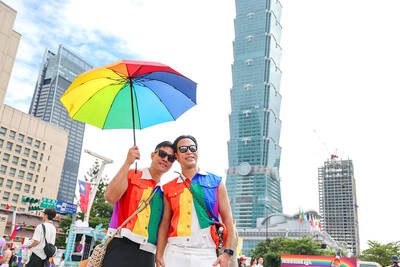對話 Dialogue
馬克:小實,我想訂南部的飯店,你有沒有推薦的飯店?
Make: Xiǎoshí, wǒ xiǎng dìng nánbù de fàndiàn, nǐ yǒu méiyǒu tuījiàn de fàndiàn?

小實:你對飯店有什麼特別的要求嗎?
Xiaoshi: Nǐ duì fàndiàn yǒu shénme tèbié de yāoqiú ma?
馬克:我希望飯店離市區近一點,交通方便。
Make: Wǒ xīwàng fàndiàn lí shìqū jìn yìdiǎn, jiāotōng fāngbiàn.
小實:我推薦你使用這幾個網站。
Xiaoshi: Wǒ tuījiàn nǐ shǐyòng zhè jǐ ge wǎngzhàn.
馬克:好,除了輸入日期和地點以外,還有什麼要注意的?
Make: Hǎo, chúle shūrù rìqí hàn dìdiǎn yǐwài, hái yǒu shénme yào zhùyì de?
小實:如果你很在乎交通,可以看看飯店的接駁車、租借腳踏車的服務。
Xiaoshi: Rúguǒ nǐ hěn zàihū jiāotōng, kěyǐ kànkàn fàndiàn de jiēbó chē, zūjiè jiǎotàchē de fúwù.
馬克:哇!很方便,這樣我就不一定要租車了。
Make: Wa! Hěn fāngbiàn ye, zhèyàng wǒ jiù bù yídìng yào zūchē le.
小實:沒錯,你多看看,需要討論的話再告訴我吧。
Xiaoshi: Méicuò, nǐ duō kànkàn, xūyào tǎolùn dehuà zài gàosù wǒ ba.
馬克:好的,謝謝你!
Make: Hǎo de, xièxie nǐ!
英文翻譯 Translation
Mark: Xiaoshi, I want to book a hotel in the south. Do you have any recommendations?
Xiaoshi: Well, do you have any special requirements for the hotel?
Mark: I’d like the hotel to be close to the city and convenient for transportation.
Xiaoshi: I recommend you use these Web sites.
Mark: Well, besides entering the date and location, is there anything else to be aware of?
Xiaoshi: If you care about transportation, you can look at the hotel shuttle bus and bicycle rental services.
Mark: Wow! It’s very convenient, so I don’t have to rent a car.
Xiaoshi: That’s right, take a look and let me know if you need to discuss it.
Mark: OK, thank you!
單字片語 Vocabulary
1. 推薦 (tuījiàn) to recommend
2. 要求 (yāoqiú) to require
3. 交通 (jiāotōng) transportation
4. 輸入 (shūrù to) enter
5. 注意 (zhùyì) notice
6. 在乎 (zàihū) to care
7. 接駁車 (jiēbóchē) shuttle bus
8. 租借 (zūjiè) lease
9. 服務 (fúwù) to serve
10. 吔 (ye) to express surprise or sigh
教材音檔 Audio Files
教材影片 Video Files:
https://www.instagram.com/celc.nou_tw/guide/_/17999106352646292/
實踐大學華語中心提供
By Shih Chien University Chinese Language Center: https://chineseusc.com/

California will phase out certain ultra-processed foods from school meals over the next decade under a first-in-the-nation law signed on Oct. 8 by Gov. Gavin Newsom. The law seeks to define ultra-processed foods, the often super-tasty products typically full of sugar, salt and unhealthy fats. The legislation requires the state’s Department of Public Health to adopt rules by mid-2028 defining “ultra-processed foods of concern” and “restricted school foods.” Schools have to start phasing out those foods by July 2029, and districts will be barred from selling them for breakfast or lunch by July 2035. Vendors will be banned from providing the “foods

Have you ever bought a new smartphone and suddenly found yourself dissatisfied with your perfectly fine headphones? Before long, you’ve purchased premium wireless earbuds, a protective case and a fast-charging station. What begins as a single acquisition snowballs into a shopping spree—this is the Diderot effect in action. Named after the 18th-century French philosopher Denis Diderot, the Diderot effect originates from an essay he wrote. In it, he recounted receiving a luxurious robe as a gift. As lovely as it was, the robe clashed with the rest of his humble belongings. One by one, he replaced his possessions to match the

A: The 23rd Taiwan Pride parade will be marching again on Saturday, Oct. 25. B: Will the parade kick off from Taipei City Hall Plaza as usual? A: Yup, and there will be over 110 LGBT-themed booths at the Rainbow Festival in the plaza. B: The organizer is reportedly teaming up with Japanese, South Korean and other international groups. A: So we are likely to see more foreign visitors from across the world. Hopefully, this year’s parade can smash the record of 200,000 marchers set in 2019. A: 第 23 屆台灣同志遊行本週六即將登場。 B: 遊行還是從台北市政府前廣場出發嗎? A: 對,廣場「彩虹市集」還有超過

對話 Dialogue 清清:華華,你知道這禮拜為什麼又有三天連假嗎? Qīngqing: Huáhua, nǐ zhīdào zhè lǐbài wèishénme yòu yǒu sān tiān liánjià ma? 華華:知道啊!10月25號是臺灣光復節,從今年起,又是可以放假的國定假日了。剛好碰到禮拜六,所以禮拜五多補一天假。 Huáhua: Zhīdào a! Shí yuè èrshíwǔ hào shì Táiwān Guāngfù Jié, cóng jīnnián qǐ, yòu shì kěyǐ fàngjià de guódìng jiàrì le. Gānghǎo pèngdào lǐbài liù, suǒyǐ lǐbài wǔ duō bǔ yì tiān jià. 清清:對了! 我想起來了,聽我爸媽說過,以前十月有好幾天都放假,光復節是其中之一。 Qīngqing: Duìle! Wǒ xiǎng qǐlái le, tīng wǒ bàmā shuōguò, yǐqián shí yuè yǒu hǎojǐ tiān dōu fàngjià, Guāngfù Jié shì qízhōng zhī yī. 華華:光復節是慶祝日本人在二次世界大戰結束後,離開臺灣的日子。 Huáhua: Guāngfù Jié shì qìngzhù Rìběn rén zài Èrcì Shìjiè Dàzhàn jiéshù hòu líkāi Táiwān de rìzi. 清清:那是一九四五年的事了。 Qīngqing: Nà shì yī jiǔ sì wǔ nián de shì le. 華華:沒錯,對臺灣來說,是很重要的歷史。 Huáhua: Méicuò, duì Táiwān